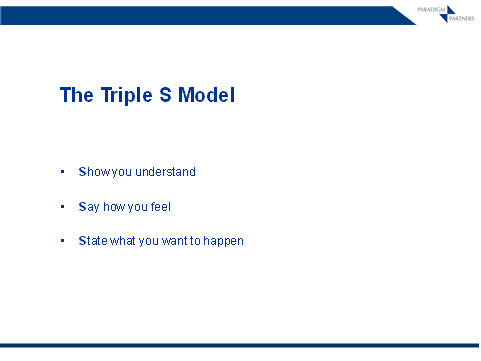
One of the things that still surprises me is how often I’m approached for legal advice, when the caller admits that they have never spoken to the individual about their performance concerns, and yet they are now asking me for advice about sacking them. How do so many business leaders end up here?
The main reason that they do is because, across the board, talking about staff performance is a difficult task, so we tend to avoid it. However, the reason that is difficult in the first place is that we don’t get enough practice.
At the end of a recent presentation to a CEO Peer Group I was asked by some of the delegates over lunch about the sorts of things you can do to 'talk performance'. Despite, the fact that this will probably mean that you will need less legal advice from me, here’s some of the ideas I shared to encourage great performance from your people.
- Make sure you are seen to pay attention to good performance.
You’ll stand a much better chance of getting a positive response to critical feedback if you’ve got a history of giving praise where praise is due. Also, it’s often said that you should ‘criticise in private and praise in public’. Make sure you are seen to notice when things are done well and tell people in front of their peers. - Comment on what you have actually observed and avoid making assumptions.
Telling somebody that they are not a very good team player will not help them much, but tell them what you have observed that suggests that conclusion to you, will give them something to work on. ‘I’ve noticed that you don’t say a lot in team meetings’ is an observation, ‘You’re not a good team player’ is an assumption. - Explain the impact that behaviours you want to change are having.
Very often people think that their shortcomings don’t make any difference, or when you do suggest they improve something, they think you are just fussing. Explain what happens as a result of the behaviour, and how it could be if they changed. - Tell people what you’d prefer to see.
‘I’d prefer to see you spending at least 25% of your time visiting existing clients’ is more helpful than ‘You’re not out on the road enough’. - Avoid second hand feedback.
There is nothing worse than starting a conversation with ‘somebody has told me’ or ‘it has got back to me that you are...’. Don’t even start down this road. - Think about whether the performance challenge is a ‘can’t do’ or ‘won’t do’.
Somebody who ‘can’t do’ may need training, or just the opportunity to work alongside someone else who does it well. The person who has the skills and experience but is not using that to the best advantage of your business may need more involvement in decision making to encourage their engagement. - Be more specific.
‘I think you need to set aside some time to sit down regularly with the production team’ is more helpful than ‘you’re not good at communicating what you want’. Whatever you do, make sure you avoid the trap of not being ready with specifics and simply making comments about ‘just wanting things to improve’. - Give timely feedback.
Stacking it all up for an annual appraisal is unlikely to make any difference, and will get appraisal a bad name. Make sure that feedback is given close to the issue. ‘I’d like to have a chat about why that customer was so angry yesterday’, is much better than ‘there’s been a few incidents with customers over recent months’. - Stay in assertive mode.
My own favourite tool, is what I call the ‘Triple S’ model of assertiveness, which I use in both performance management training as well as when I’m working on issues such as trade union relationships with large corporate clients.
The model involves showing you understand, stating your position and saying what you want to happen next. Being in this mode might sound like:-
‘I understand that you’ve been missing the deadline for good reasons (understanding). I’d have preferred it if you had warned me that the deadlines were going to be missed so that I could take appropriate action (your position). I’d like you to turn your immediate attention to getting this months’ figure to me by the close of play tomorrow, and to make sure that in future you let me know if there is a problem with the deadline in time for me to assist with getting things done differently if that is necessary (what you want to happen next)’.
If you want to start using this model, try applying it in writing first – use it in emails or letters, you’ll be amazed at how the impact of your words can change. - Be ready to break things down into bite sized chunks.
‘Let’s try a few new approaches over the coming month, and then review how they have worked’ can be more helpful than trying to ‘build Rome in a day’. People’s performance is often like the proverbial tanker, it takes time to turn around.
There we have it. 10 top ‘tried and tested’ performance enhancing tips. If you do nothing else after reading this blog, go out and do number 1 above. It will be noticed!
More from Vistage:


